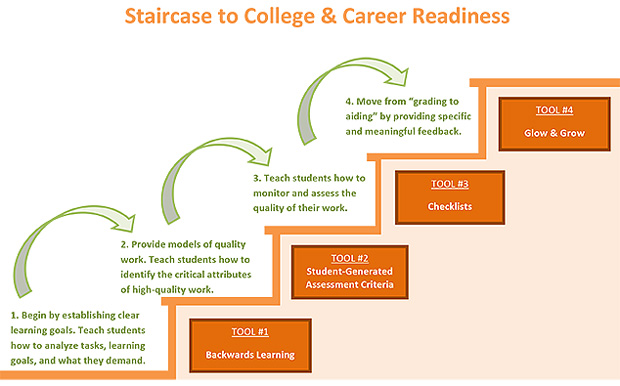The Thoughtful Classroom Teacher Effectiveness Framework™
Tools for Improving Practice
Teacher TIP Sheet
This series is designed to provide teachers with ideas and ready-to-use tools to better implement The Thoughtful Classroom Teacher Effectiveness Framework.
TEACHER TIP #1
Tools for Preparing Students for New Learning
We have received feedback indicating that many teachers are looking for ways to design lessons around The Five Episodes of Effective Instruction (Dimensions 5-9 of The Thoughtful Classroom Teacher Effectiveness Framework).
For this first Teacher TIP, we will focus on Dimension 5: Preparing Students for New Learning, the first episode in the instructional process. A key practice in this episode is to begin with a “hook”—an engaging activity that captures students’ attention and helps them activate prior knowledge. A hook can be an intriguing question, an activity that involves a discrepant event, or any of a number of activities that help students form a personal connection to the learning to come.
Once the learners are “hooked,” it is critically important that they understand clearly the learning goals they will be pursuing over the course of the unit. Research shows that 1) actively involving students in processing learning goals and 2) giving students responsibility for developing assessment criteria both lead to higher achievement. In this Teacher TIP, we provide two powerful tools to help you accomplish both of these goals in your classroom: Backwards Learning and Student-Generated Assessment Criteria (click here to download). Both of these tools are from the award-winning book, Tools for Thoughtful Assessment: Classroom-Ready Techniques for Improving Teaching and Learning.
TEACHER TIP #2
Tools (and a Strategy) for Presenting New Learning
Teachers are often on the lookout for practical ideas and resources to help them design lessons and units using
The Five Episodes of Effective Instruction (Dimensions 5-9 of The Thoughtful Classroom Teacher Effectiveness Framework). In response, our previous Teacher TIP featured two tools for the first episode—Dimension 5: Preparing Students for New Learning. For this Teacher TIP, we continue through the Five Episodes and move on to Dimension 6: Presenting New Learning.
A key element in this dimension is formative assessment. Are students “getting it”? Do I need to modify the pace of instruction? Use the two tools in this Teacher TIP (Stop, Slow, Go! and Memory Box) to formatively assess student comprehension during and after lessons. Click here to download both of these assessment tools, which come from the award-winning book, Tools for Thoughtful Assessment: Classroom-Ready Techniques for Improving Teaching and Learning.
In addition to these two assessment tools, you’ll also find “Compare & Contrast: A Strategy for Avoiding Comparison Pitfalls.” (Click here to download the document.) This document, adapted from ASCD’s The Core Six: Essential Strategies for Achieving Excellence with the Common Core, is designed to help you develop Compare & Contrast lessons that do more than evaluate student learning. Indeed, a common misconception about Compare & Contrast is that it should be used at the end of a lesson or unit as an evaluation technique. But research shows that using Compare & Contrast as a way to present content and develop skills—as a learning strategy rather than an evaluation technique—leads to dramatic gains in student achievement. Teaching comparative thinking in this way is especially important because comparative analysis is a critical skill for college and 21st-century careers.
TEACHER TIP #3
Climbing the Staircase to College & Career Readiness
How do we prepare students to succeed on new and more rigorous assessments? The truth is we can develop and administer all of the assessments in the world, but if we don’t develop students’ quality-control skills—if we don’t teach students how to plan, execute, assess, and improve their own work—then their performance will likely improve only marginally. Even worse, we won’t be doing our students any favors when it comes to preparing them for college and careers in the 21st century, which require high levels of self-direction. Instead of administering test after test, we need an approach that empowers students to take control of their learning and use it to improve their work.
This approach is best represented by a staircase or a series of instructional steps teachers can take to help students develop the self-assessment skills that lead to better and more self-directed work.
On the left side are the instructional steps and on the right are tools from Tools for Thoughtful Assessment that help you accomplish each move—and help your students climb the staircase towards college and career readiness. (Click here to download these four tools to try in your classroom!)

